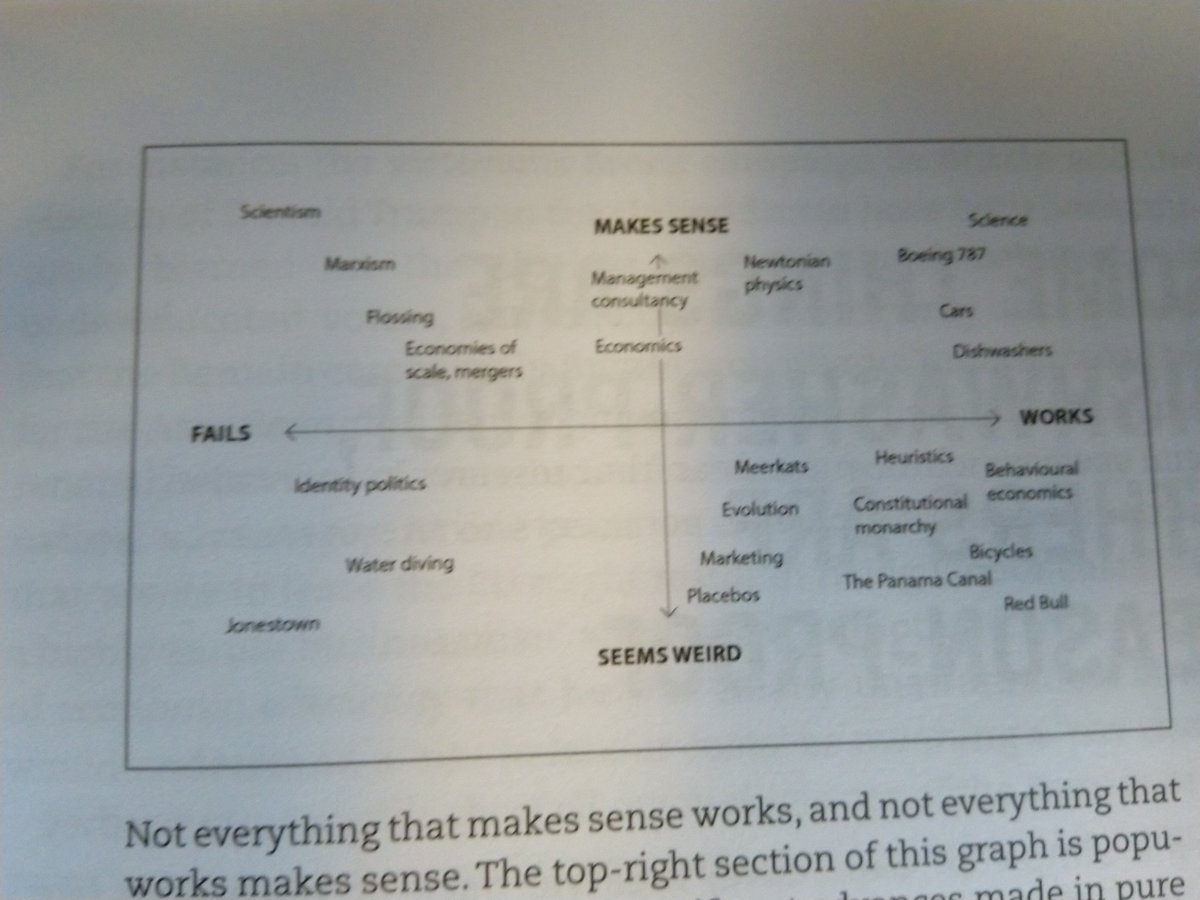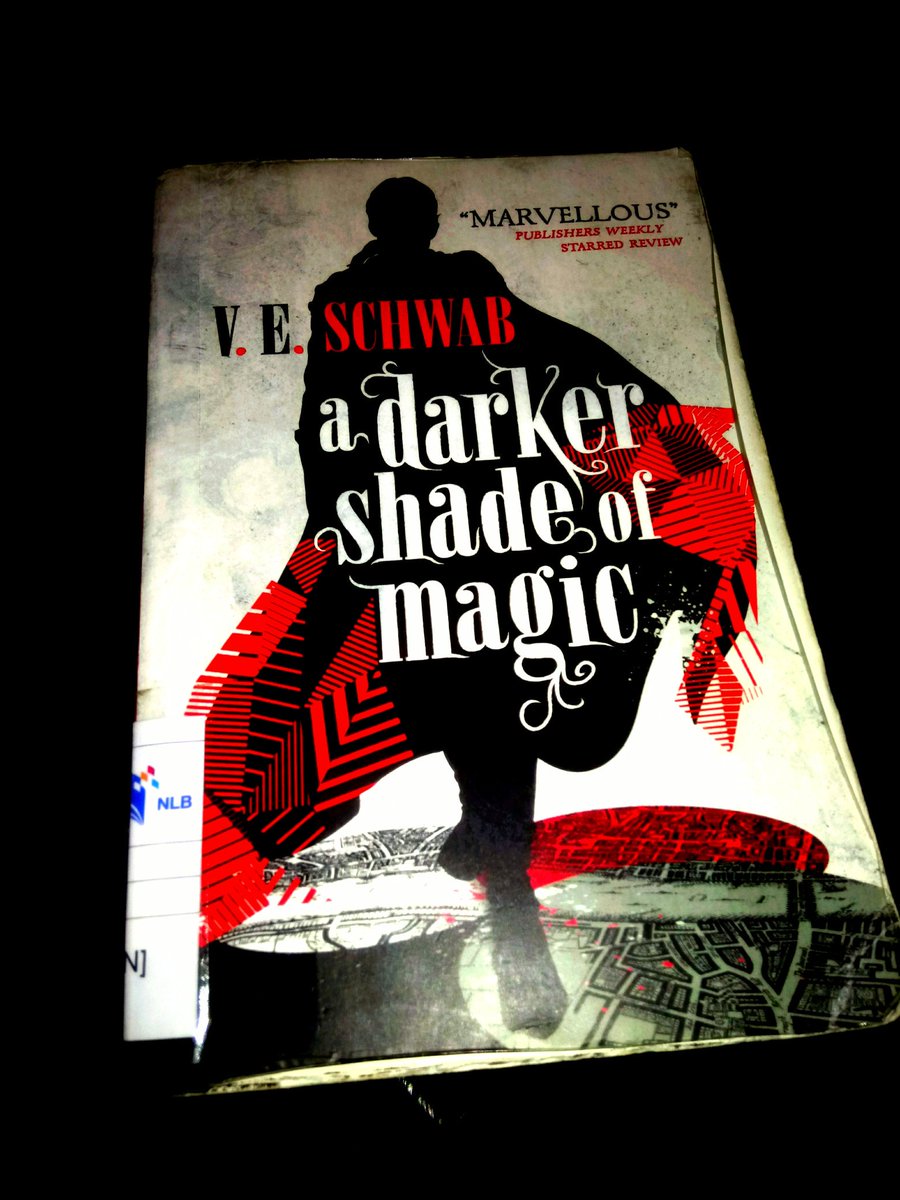goodreads.com/book/show/2349…
Bhargava et al (2017) The costs of poor
health (plan choices) &
prescriptions for reform google.com/url?sa=t&sourc…
tandfonline.com/doi/abs/10.108…
Jerry Seinfeld's Wife Spent $415 During Uber's Surge Pricing To Make Sure Her Kid Got To A Sleepover
businessinsider.com/jerry-seinfeld…
Health care plan: use choice tournament
Blind spots: zoom out, provide fewer details
Uber surge pricing: deploy ugly font
Besedes et al - Reducing Choice Overload Without Reducing Choices
netspar.nl/publicatie/red…

In a real-world study conducted in Israel, providing less-detailed feedback led to big improvements in decision making among investor.
I summarized the cited paper on my blog: wilte.wordpress.com/2018/12/07/the…
Boost quality of our digital decisions
My hope is that we can use the scale of technology to bring more fixes to more people in far less time
Update our behavioral toolkit for the digital age
Oppenheimer et al (2009) Instructional Manipulation Checks
Pen&paper: 14-29% fail
Computer screen: 46% fail check
papers.ssrn.com/sol3/papers.cf…
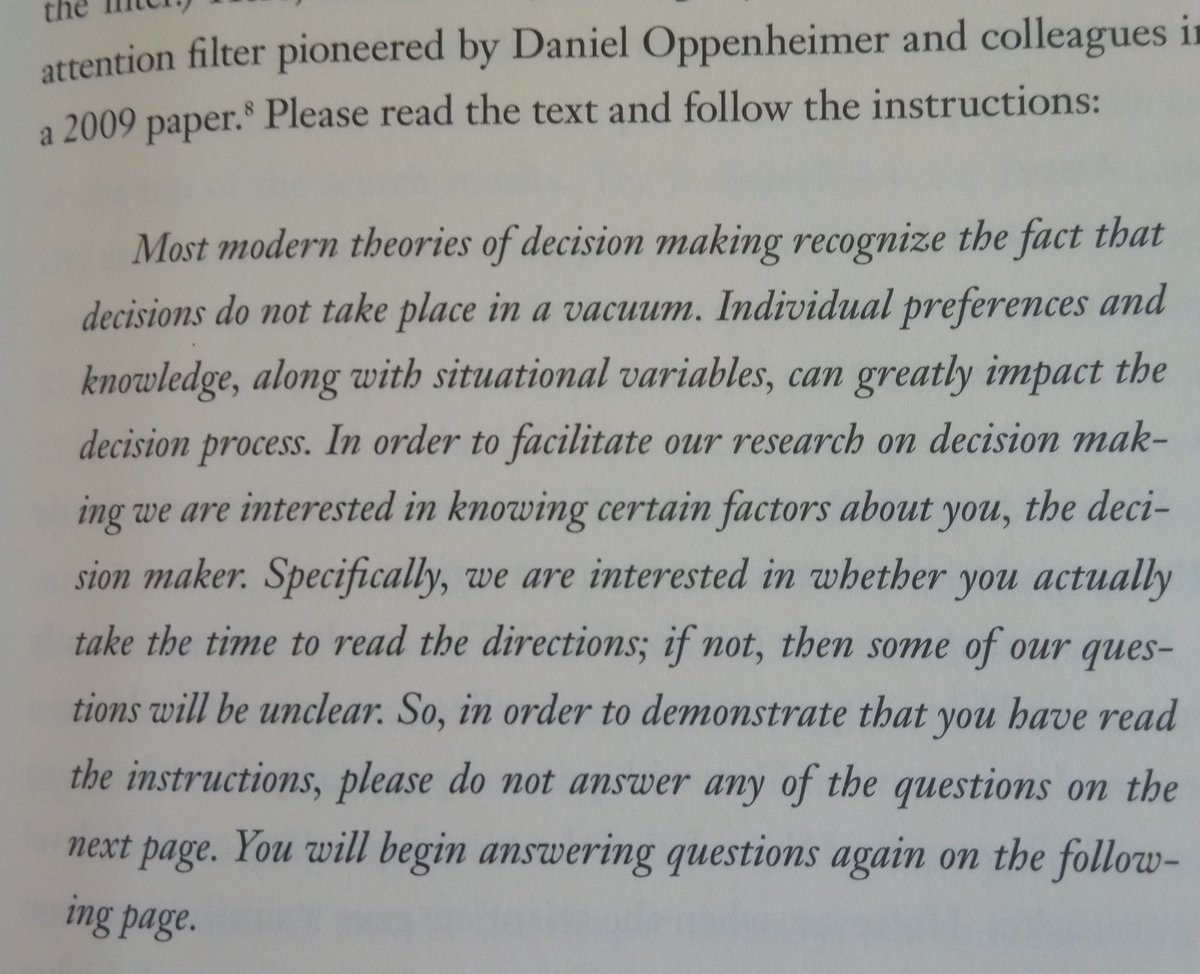
Psychologist Nelson Cowan argued that the true magical number is actually four (+/-1); most tests of working memory showing that we start to miss crucial information whenever the number of bits exceeds 4
Experiment: memorize 7 (control: 2) digits, walk to other room and in the hall between rooms, choose between cake and fruit.
7 digits: 63% choose cake (vs 41% for 2-digit group)
Memorizing 7-digits: 84% chose cake, vs 2-digit: 38%
Source: Shiv & Fedorikhin (1999)
Heart and Mind in Conflict: Interplay of Affect and Cognition in Consumer Decision Making
gsb.stanford.edu/faculty-resear…
JAMA (2013) Toward Electronic Medical Record Alerts That Consume Less Physician Time
jamanetwork.com/journals/jamai…
Possible solution: smart defaults, prefilled forms
science.sciencemag.org/content/341/61…
Hannak et al (2014) Measuring Price Discrimination and Steering on E-commerce Web Sites
ftc.gov/system/files/d…
Whenever the proxy observes a search request, it fires off two identical searches using PhantomJS
(with no cookies) and saves the resulting pages. The results
from PhantomJS serve as a comparison and a control result.
eecs.harvard.edu/~kgajos/papers…
Designers will be able to maximize appeal of ther website with quantitative model of our first impressions
Future: aesthetic algorithm customizing appearance of every site you see
Function follows form
Worst snack in middle: only 30% find best snack. If in middle: 91%
In the digital world, screen location is a hugely important variable
Effects of information presentation format on consumer information acquisition strategies.
Bettman & Kakkar, J Consumer Research, 1977
Meta-study on 607 experiments; in 38% of cases, feedback actually led people to do worse.
Feedback: one can have too much of a good thing
Kluger, A. N., & DeNisi, A. (1996). The effects of feedback interventions on performance. Psychological Bulletin
Thanks to high frequency of investing feedback; myopic loss aversion amplified by the online world (p 93)
Eg: online ordered pizzas contain 33% more toppings, 6% more calories, bacon sales +20%
papers.ssrn.com/sol3/papers.cf…
1 time it right
2 make it personal
3 avoid feedback overdose
4 trigger a feeling (affect heuristic)
5 incorporate action plan
6 encourage, don't criticize
7 follow the evidence (test it)
D dosage
I easy
G good
I intuitive
T timing
A actionable
L learning
Hard to read texts/fonts; higher student performance (Oppenheimer) or scores on Cognitive Reflection Test (Alter et al).
Pen is mightier than the keyboard for note taking: pdfs.semanticscholar.org/6b6a/25a7a6d95…
According to Cordova and Lepper, personalization enhances attention and enjoyment:
1 increases intrinsic motivation (info is self-relevant)
2 higher perceived competence
psycnet.apa.org/record/1996-06…
Drawing the attention of those who fail to pay road tax
When letters to non-payers of car tax included a picture of the offending
vehicle, payment rates rose from 40 to 49%.
A (attractive) from EAST
bi.team/publications/e…
idomoo.com/drum-roll-plea…
Increase pension savings rate after a personalized landmark (eg birthday)
Beshears, Dai, @katy_milkman, @shlomobenartzi:
Framing the Future: The Risks of Pre-Commitment Nudges and Potential of Fresh Start Messaging
static1.squarespace.com/static/5353b83…
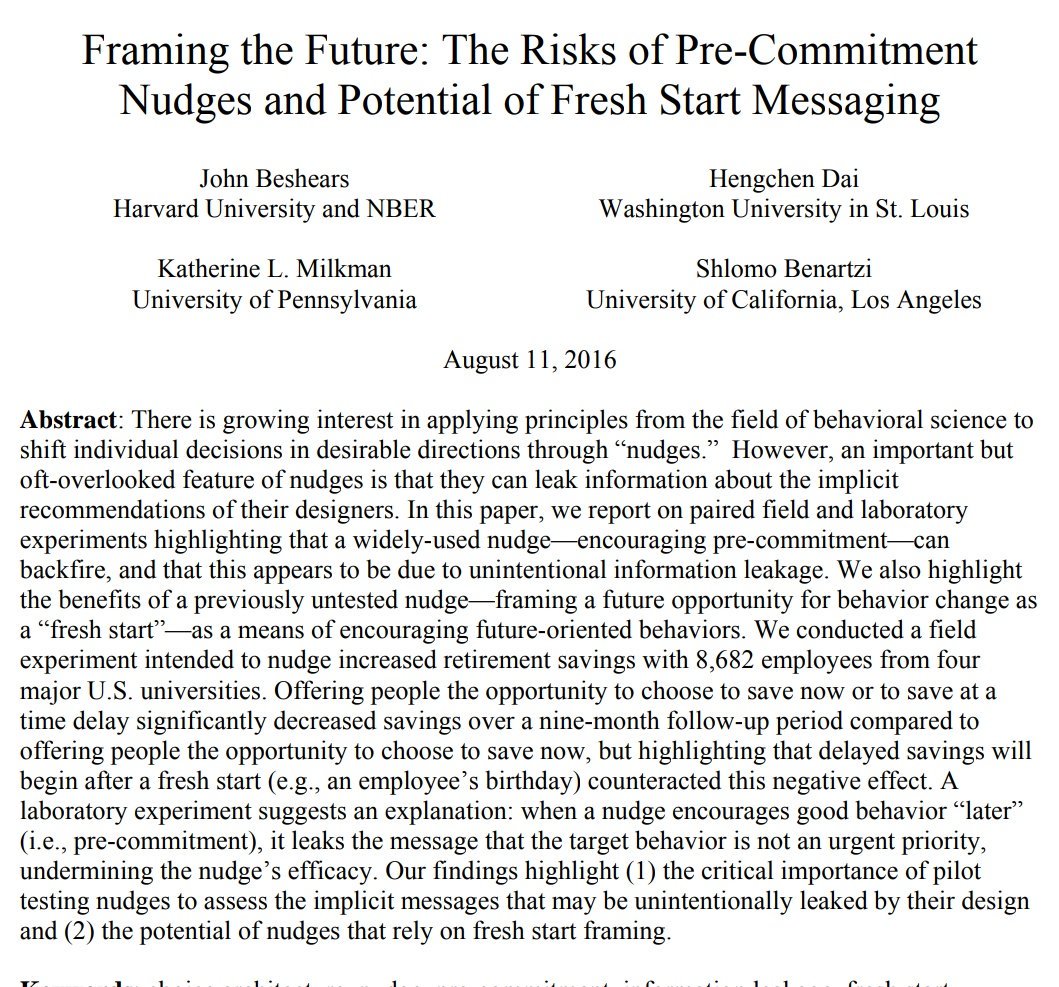
Call for "just in time" financial education, tied to specific behavior
Fernandes et al (2014) Financial Literacy, Financial Education and Downstream Financial Behaviors
papers.ssrn.com/sol3/papers.cf…
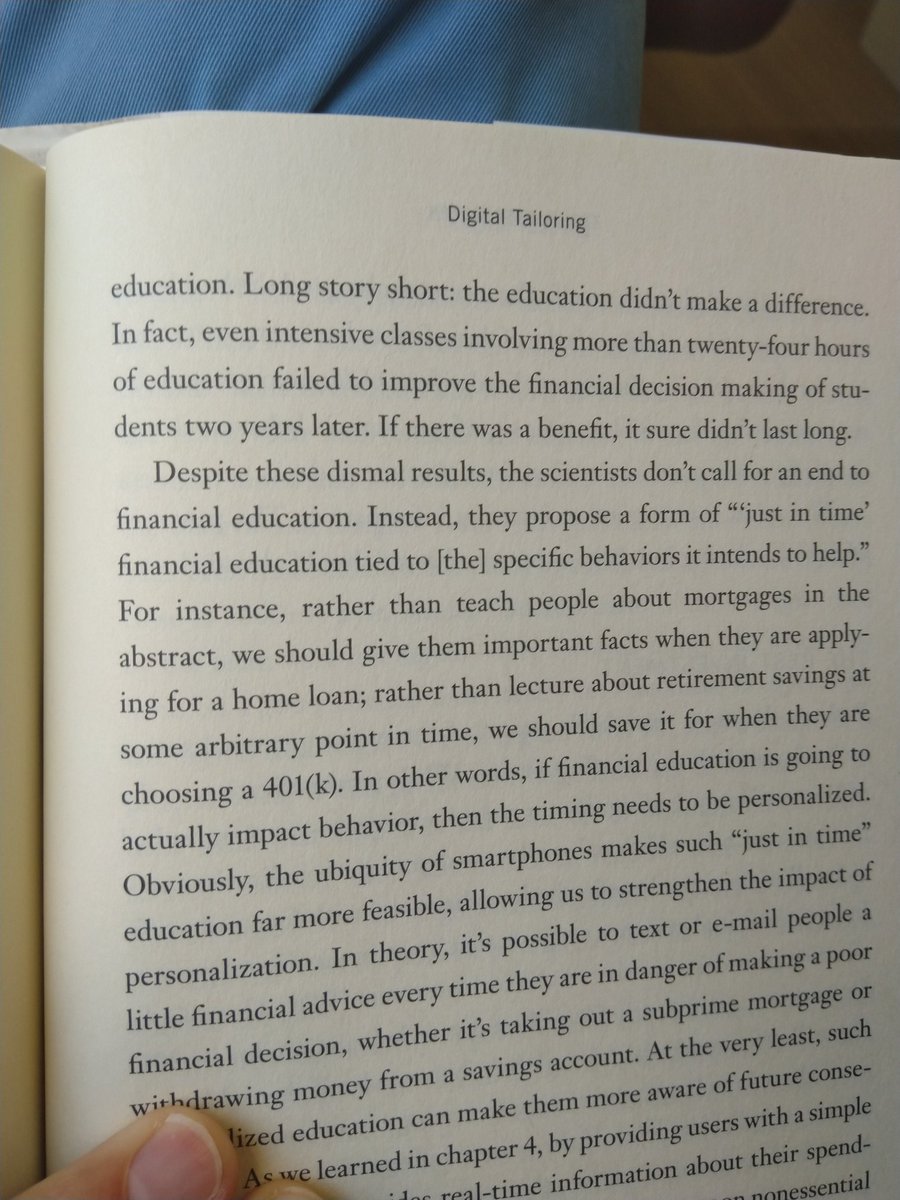
Iyengar et al (2003) How Much Choice is Too Much?: Contributions to 401(k) Retirement Plans
semanticscholar.org/paper/How-Much…
hbr.org/2014/01/three-…
However, if website has effective choice architecture, and takes advantage of categorization, Simonson's theory might hold
articles.uie.com/three_click_ru…
's book Alchemy)
twitter.com/wilte/statuses…
"Our primary finding is that the majority (61%) of the 23,894 employees in our sample selected financially dominated plans"
Choose to Lose: Health Plan Choices from a Menu with Dominated Option academic.oup.com/qje/article-ab…
How Mobile Phones Can Solve the Retirement Savings Crisis
scientificamerican.com/article/how-mo…
Query theory: we arrive at decisions via internally posed questions.
RCT @B_I_Tweets showed most effective messag: "if you needed an organ transplant would you have on? If so please help others"
bi.team/publications/a…












